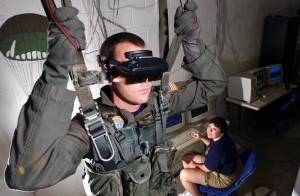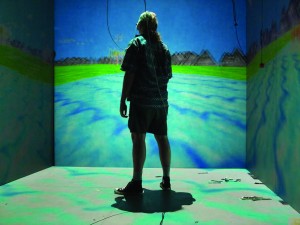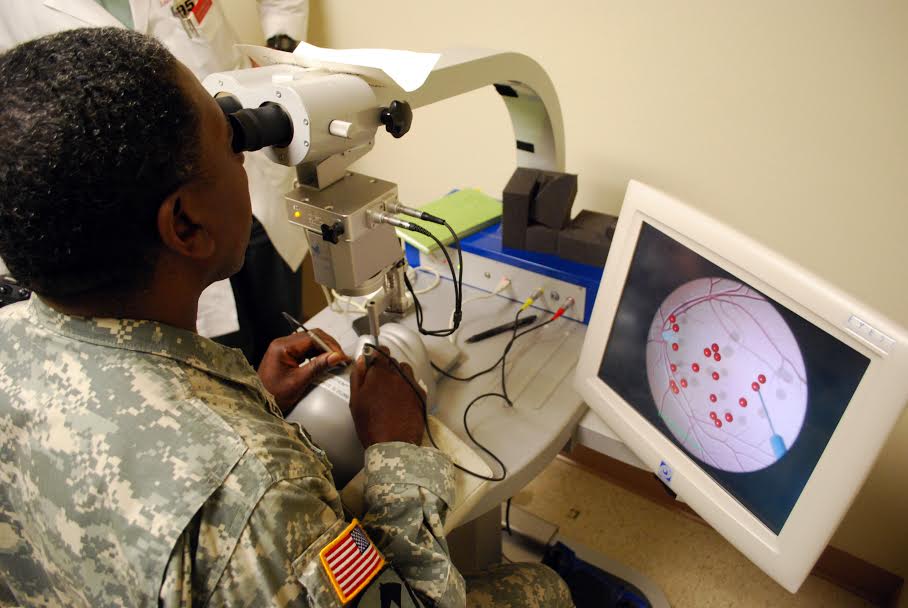How do you define reality? For Neo in The Matrix, this is a hard question. Born into a virtual reality system so realistic that robots use it to ensnare human society, Neo struggles to come to terms that his world is no more than a computer simulation. While Neo’s virtual reality is fictional, similar realities do in fact exist in our world — and they have a lot of potential for good.
Virtual realities, or virtual environments, are simulated, three-dimensional worlds that immerse users in sensory experiences that mimic reality. In The Matrix and other popular science fiction films, these realities are controlled by a user’s brainwaves alone. Other films, like Ender’s Game, feature virtual reality combat simulators, in which actions in a virtual simulation translate to real life actions. All of these fictional systems seem relatively simple, appearing more like video games than cumbersome programs.
Real world virtual reality systems are much more interactive, relying on both software components to simulate virtual realities as well as physical components that users wear to enable simulations. Virtual reality software is like that of a video game: each character and environment correlates with a specific code that, when processed, dictates how it interacts with other characters and environments. To manipulate these codes in a video game, users might press buttons on a controller. Similarly, in virtual reality, users manipulate environments and characters through input devices in the physical gear that they wear or hold, such as headgear, motion-tracking gloves, or joysticks. These devices convert user movements into signals that can be processed by the virtual reality software.

While the most obvious use for virtual environments is in video gaming, this technology has a myriad of other capabilities. First conceptualized for use in military flight and combat simulations, virtual reality is compelling enough that the military and NASA rely on it for training exercises. Engineers and architects use the technology to simulate safety tests for cars and buildings as an alternative to constructing physical models.
Medicine is perhaps one of the most unique applications for virtual environments. In these simulated realities, doctors can conduct surgeries remotely by manipulating robots. Virtual environments can also be used in behavioral therapy to project various social situations, opening up a whole new range of treatments for cognitive and psychiatric disorders. So far, they have been effective in treating anxiety disorders by exposing patients to a series of virtual realities that simulate their anxiety triggers.
In his research, Daniel Yang of the Yale Child Study Center tests the efficacy of virtual reality treatment on autism using neuroimaging. His findings show that after virtual reality therapy, the brains of individuals with autism conform more closely to neural images of typical brain development. “Virtual reality therapy is very flexible in simulating all kinds of social situations and can overcome several barriers, including reducing stress during face-to-face interaction, and increasing motivation,” Yang said. “Based on my findings, I believe it’s quite useful.”
Still, current virtual environment technologies have a few kinks. Users may experience lag time between the output and input of signals employed by their virtual environment gear. In video games, this problem is only a minor nuisance that delays characters’ actions on screen. However, in virtual environments, this delay prevents the brain from interacting with simulated settings as if they were real, sometimes causing intense nausea.

Furthermore, researchers in a recent study conducted at the University of California in Los Angeles discovered that our brains are not as easily fooled by virtual realities as The Matrix might lead you to believe. When exploring a true landscape, the brain activates specific patterns of neural pathways — but when the brain navigates a virtual landscape, neurons fire off at random. Unlike the high-level virtual realities of science fiction, current virtual reality systems fall short of reality.
While virtual reality technology is still a work in progress, the unveiling of one such technology in early 2016, Oculus Rift, demonstrates improvements in real world virtual environments. The producers of the commercial Oculus Rift expect to see it become a common facet in many video games, a potential educational tool, and a more accessible form of behavioral therapy.
Virtual reality has progressed a long way, from a concept exclusive to science fiction to an actual consumer product. Let us hope that — unlike the virtual realities dramatized by Hollywood — ours will not lead to the apocalypse.

